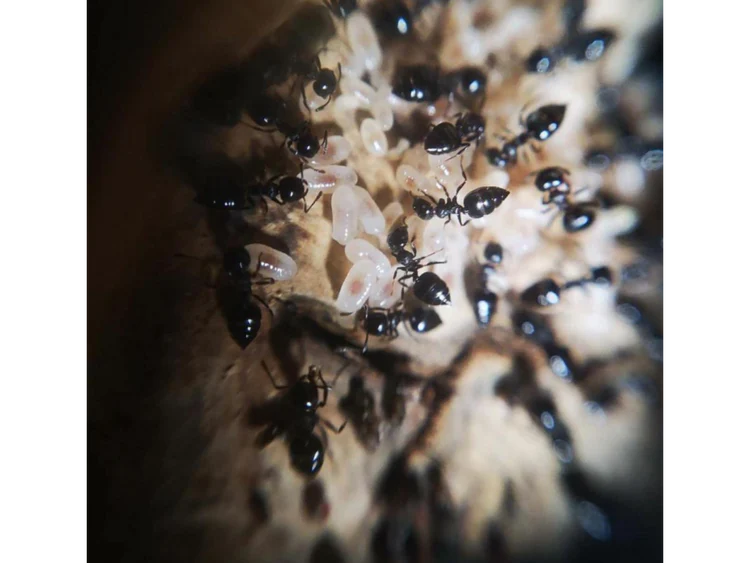
Esthetic Ant Nests Now Available!
Something for everyone!
From beginner kits to expert equipment, we're excited to help you explore this fun and rewarding hobby!
-

Beginner Ants
Of course, we sell a large variety of queen ants and ant...
The Ant Keeping Journey

Every Colony Starts With A Queen
Every year, colonies release queens and males in what is called a "nuptial flight". The queens and males take to the air and mate.
Fertile queens land on the ground, and for most species, dig a hole called a "claustral chamber" in the ground or into wood, where they lay their eggs and slowly raise their first brood of workers.
In captivity, we replicate this stage with a test tube, which has water on one side in order to maintain humidity, and space on the other end

First Workers Hatching
After 4 - 6 weeks, the first workers begin to hatch. These workers will typically be fed only by the queen's fat reserves, and so they come out much smaller, and are known as "nanitics".
At this stage, the colony will begin foraging, and can be fed very small amounts of food every few days.
Many people ask when they can move the colony out of the test tube-- they can theoretically last a few months in the test tubes, and generally, it depends on the size, but typically you should be able to do so once they can fill 20% of the chambers in the nest.

Continuous Year 1 Growth
Over the course of the year, the colony will continually lay eggs and gain new workers. Some ways you can speed this up are:
- Heat
- Frequent feedings
- Varied Foods

Hibernation
Around winter time, most species will enter hibernation.
When this time comes, they can be placed in the fridge or garage at around 40 degrees Fahrenheit. They typically stay this way for 3-4 months before they can be woken back up.
Ant production stops for most species during this time
Afterwards, the ants can be taken out, and will continue growth like normal.
Stay in touch!
Be the first to know about new collections and exclusive offers.



